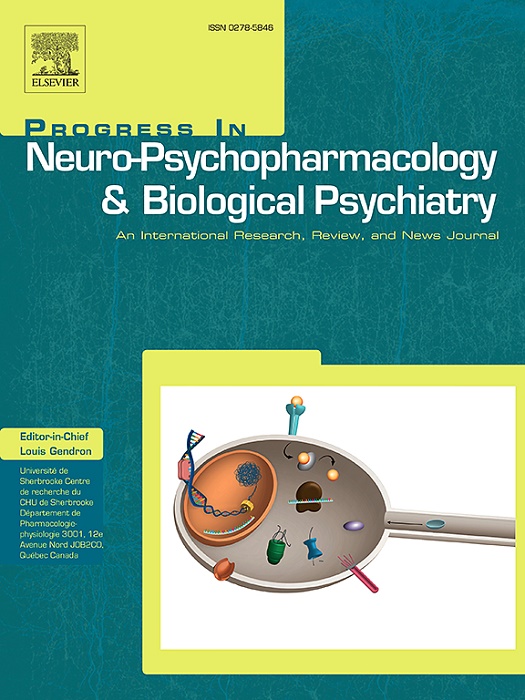The underlying neurobiological basis of gray matter volume alterations in schizophrenia with auditory verbal hallucinations: A meta-analytic investigation
IF 5.3
2区 医学
Q1 CLINICAL NEUROLOGY
Progress in Neuro-Psychopharmacology & Biological Psychiatry
Pub Date : 2025-03-13
DOI:10.1016/j.pnpbp.2025.111331
引用次数: 0
Abstract
Schizophrenia patients with auditory verbal hallucinations (AVH) frequently exhibit brain structural alterations, particularly reductions in gray matter volume (GMV).Understanding the neurobiological mechanisms underlying the changes is essential for advancing treatment strategies. To address this, a meta-analysis was conducted to identify GMV changes in schizophrenia patients with AVH and their associations with gene expression and neurotransmitter receptor profiles. The results indicated significant GMV reductions in the left and the right insula, as well as the left anterior cingulate cortex. Ontology analysis of genes associated with GMV alternations revealed enrichment in biological processes related to ion transport and synaptic transmission. Hub genes from the KCN, SCN, GN, and PRK families, along with neurotransmitter receptors such as D2, VAChT, and mGluR5, showed significant correlations with GMV changes. Furthermore, multivariate linear regression analysis demonstrated that GNB2, GNB4, PRKCG, D2, and mGluR5 significantly predicted GMV alternations. These findings suggest that GMV reductions in schizophrenia with AVH are linked to disruptions in neurobiological processes involving specific genes and neurotransmitter systems, highlighting the potential targets for therapeutic intervention.
精神分裂症伴听觉言语幻觉的灰质体积改变的潜在神经生物学基础:一项荟萃分析调查。
伴有听觉言语幻觉(AVH)的精神分裂症患者经常表现出大脑结构改变,特别是灰质体积(GMV)的减少。了解这些变化背后的神经生物学机制对于推进治疗策略至关重要。为了解决这个问题,进行了一项荟萃分析,以确定AVH精神分裂症患者的GMV变化及其与基因表达和神经递质受体谱的关系。结果显示,左、右脑岛以及左前扣带皮层的GMV显著减少。对GMV变化相关基因的本体论分析显示,与离子转运和突触传递相关的生物过程中富集。来自KCN、SCN、GN和PRK家族的中枢基因,以及D2、VAChT和mGluR5等神经递质受体,显示出与GMV变化的显著相关性。此外,多元线性回归分析表明,GNB2、GNB4、PRKCG、D2和mGluR5显著预测GMV的变化。这些发现表明,精神分裂症伴AVH的GMV降低与涉及特定基因和神经递质系统的神经生物学过程的中断有关,突出了治疗干预的潜在目标。
本文章由计算机程序翻译,如有差异,请以英文原文为准。
求助全文
约1分钟内获得全文
求助全文
来源期刊
CiteScore
12.00
自引率
1.80%
发文量
153
审稿时长
56 days
期刊介绍:
Progress in Neuro-Psychopharmacology & Biological Psychiatry is an international and multidisciplinary journal which aims to ensure the rapid publication of authoritative reviews and research papers dealing with experimental and clinical aspects of neuro-psychopharmacology and biological psychiatry. Issues of the journal are regularly devoted wholly in or in part to a topical subject.
Progress in Neuro-Psychopharmacology & Biological Psychiatry does not publish work on the actions of biological extracts unless the pharmacological active molecular substrate and/or specific receptor binding properties of the extract compounds are elucidated.

 求助内容:
求助内容: 应助结果提醒方式:
应助结果提醒方式:


